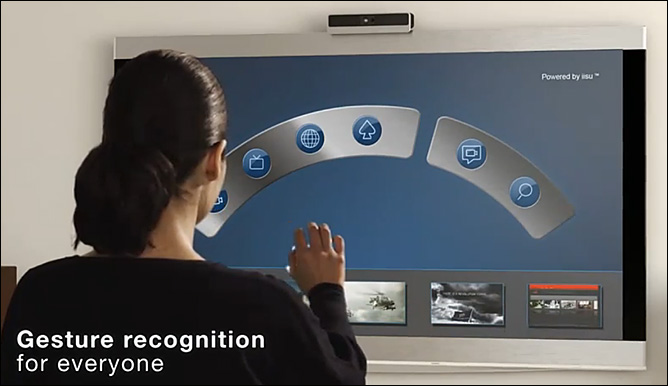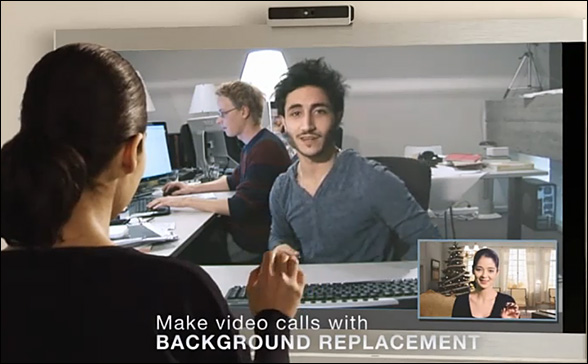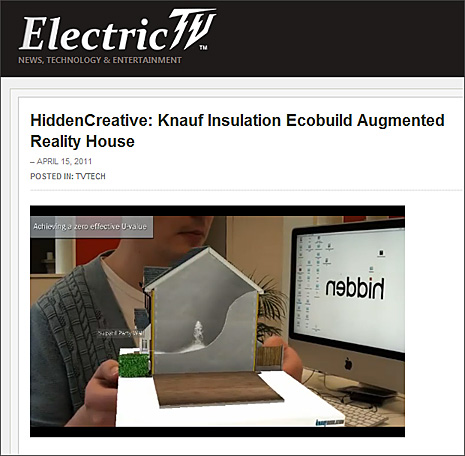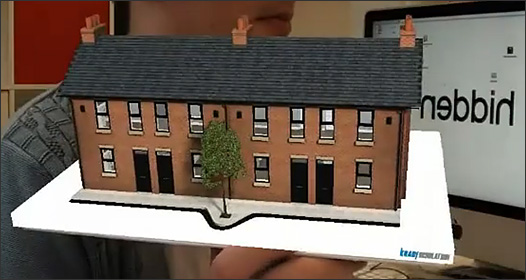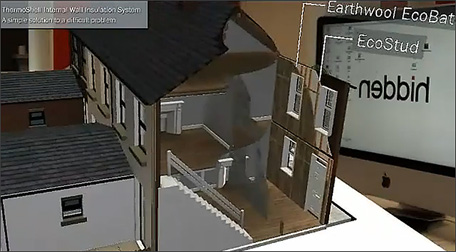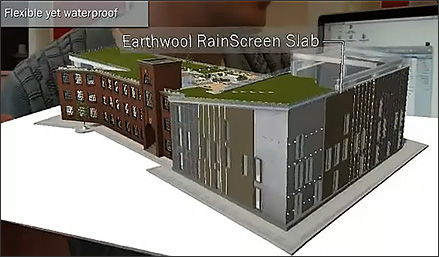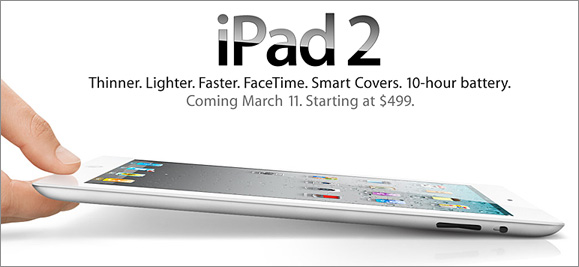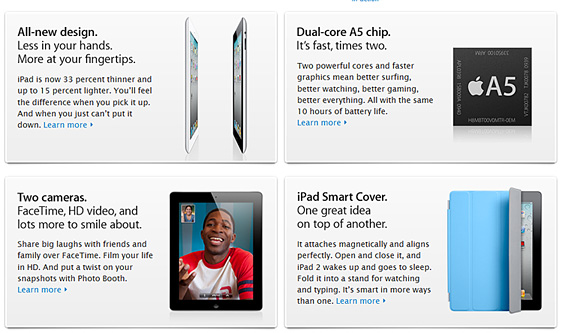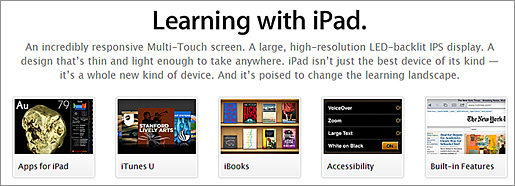…and some other intriguing concepts.
Also see:




…and some other intriguing concepts.
Also see:
Also see:
Also see:
From DSC:
Check out the topics:
The future of television: Why you won’t recognize your television just a few years from now — from iptvmagazine.com by Scott Puopolo, Cisco
Excerpt:
Imagine you are watching a program on your refrigerator. You browse through the program choices using hand gestures. When you walk into the bathroom, the display of your program automatically transfers to the display inside the bathroom mirror.
Does this seem farfetched? All of these capabilities are here now and research gathered by the Cisco “Internet Business Solutions Group” (IBSG) from manufacturers, content producers, service broadcasters and academic experts identifies amazing predictions of what is going to happen in the TV industry and when these changes are likely to occur.
Analysis of the research shows that the three main influences to these events happening include technology, consumer behavior and business models. Multiple supporting technologies have emerged including displays (digital paper and projection devices), ultra-high bandwidth connections and new types of human interfaces (sensory devices). The ways consumers discover and consume media are changing including using social networks (Digg) and on demand content (YouTube), and participating in the creation of TV programs. Business models are changing from pushing a limited number of linear based channels to aggregating many content sources (NetFlix), recommending relevant programs, and adapting media for specific viewers (personalized ads on Facebook). Using this information, the IBSG has identified 10 Predictions for the future of TV.
Study: 30% of all US households already have TV connected to Internet
 New consumer research from Leichtman Research Group, Inc. (LRG) finds that 30% of all households have at least one television set connected to the Internet via a video game system, a Blu-ray player, and/or the TV set itself — up from 24% a year ago. Overall, 10% of all adults watch video from the Internet via one of these devices at least weekly, compared to 5% last year. This increased usage is heavily driven by Netflix subscribers, with 30% of Netflix subscribers watching video from the Internet via one of these connected devices weekly, compared to 3% weekly use among all non-Netflix subscribers.
New consumer research from Leichtman Research Group, Inc. (LRG) finds that 30% of all households have at least one television set connected to the Internet via a video game system, a Blu-ray player, and/or the TV set itself — up from 24% a year ago. Overall, 10% of all adults watch video from the Internet via one of these devices at least weekly, compared to 5% last year. This increased usage is heavily driven by Netflix subscribers, with 30% of Netflix subscribers watching video from the Internet via one of these connected devices weekly, compared to 3% weekly use among all non-Netflix subscribers.
Also see:
Addendums:
From DSC:
Why post this? Because:
New Sony TV Ad: Television Redefined, Internet TV, 4/15/11 — from electrictv.com
New Samsung Smart TV Ad: Internet TV, 4/13/11 — from electrictv.com
[WATCH]: Interactive Video Conferencing at NCSSM
What a wall of 4,500 video streams looks like — from ComputerWorld.com by Lucas Mearian
Excerpt:
At last week’s SNW in Santa Clara, SSD-maker Fusion-io set up a video wall showing an digital tapestry made up by 4,500 video streams all being run through a single NAND flash card. The card is capable of over 1 million transactions per second or six gigabytes of throughput per second.
While Fusion-io has touted this video wall at the past couple of SNWs to show off its ioDrive Octal card, which packs up to 5.12TB of capacity into a single PCI Express device, the display just never gets old. So this time, I took time to shoot a four-minute video of it.
Daniel Christian:
A Vision of Our Future Learning Ecosystems
In the near future, as the computer, the television, the telephone (and more) continues to converge, we will most likely enjoy even more powerful capabilities to conveniently create and share our content as well as participate in a global learning ecosystem — whether that be from within our homes and/or from within our schools, colleges, universities and businesses throughout the world.
We will be teachers and students at the same time — even within the same hour — with online-based learning exchanges taking place all over the virtual and physical world. Subject Matter Experts (SME’s) — in the form of online-based tutors, instructors, teachers, and professors — will be available on demand. Even more powerful/accurate/helpful learning engines will be involved behind the scenes in delivering up personalized, customized learning — available 24x7x365. Cloud-based learner profiles may enter the equation as well.
The chances for creativity, innovation, and entrepreneurship that are coming will be mind-blowing! What employers will be looking for — and where they can look for it — may change as well.
What we know today as the “television” will most likely play a significant role in this learning ecosystem of the future. But it won’t be like the TV we’ve come to know. It will be much more interactive and will be aware of who is using it — and what that person is interested in learning about. Technologies/applications like Apple’s AirPlay will become more standard, allowing a person to move from device to device without missing a beat. Transmedia storytellers will thrive in this environment!
Much of the professionally done content will be created by teams of specialists, including the publishers of educational content, and the in-house teams of specialists within colleges, universities, and corporations around the globe. Perhaps consortiums of colleges/universities will each contribute some of the content — more readily accepting previous coursework that was delivered via their consortium’s membership.
An additional thought regarding higher education and K-12 and their Smart Classrooms/Spaces:
For input devices…
The “chalkboards” of the future may be transparent, or they may be on top of a drawing board-sized table or they may be tablet-based. But whatever form they take and whatever is displayed upon them, the ability to annotate will be there; with the resulting graphics saved and instantly distributed. (Eventually, we may get to voice-controlled Smart Classrooms, but we have a ways to go in that area…)
Below are some of the graphics that capture a bit of what I’m seeing in my mind…and in our futures.
Alternatively available as a PowerPoint Presentation (audio forthcoming in a future version)










— from Daniel S. Christian | April 2011
Addendum on 4-14-11:
The future of broadcast is more than integrating tweets into programming — from Brian Solis
The future of broadcast is literally at our fingertips…
The Future of television: Sweeping change at breakneck speed — from Cisco by Scott Puopolo, Carlos Cordero, William Gerhardt, Kate Griffin, Leszek Izdebski, and David Parsons, Cisco IBSG Service Provider Practice
10 reasons you won’t recognize your television in the not-too-distant future
Also see their blog posting on this.
.
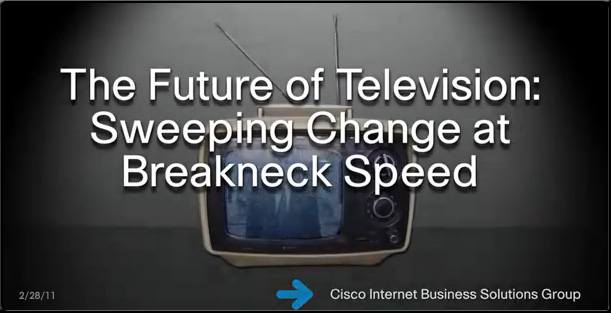
.
Reminds me of a graphic I created a while back…
.
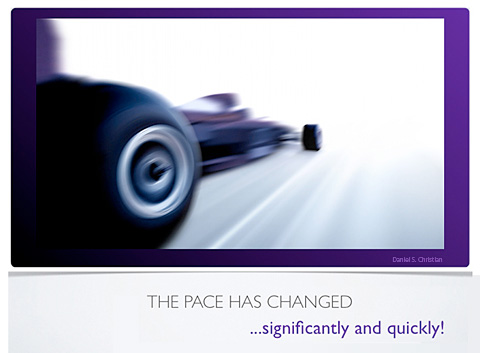
Also see:
